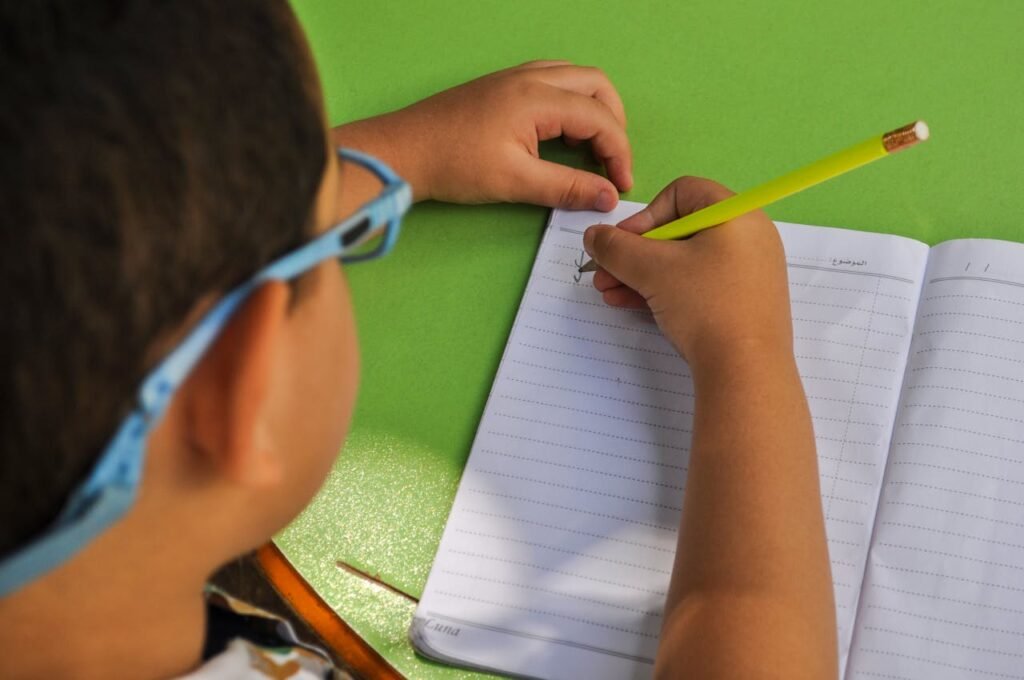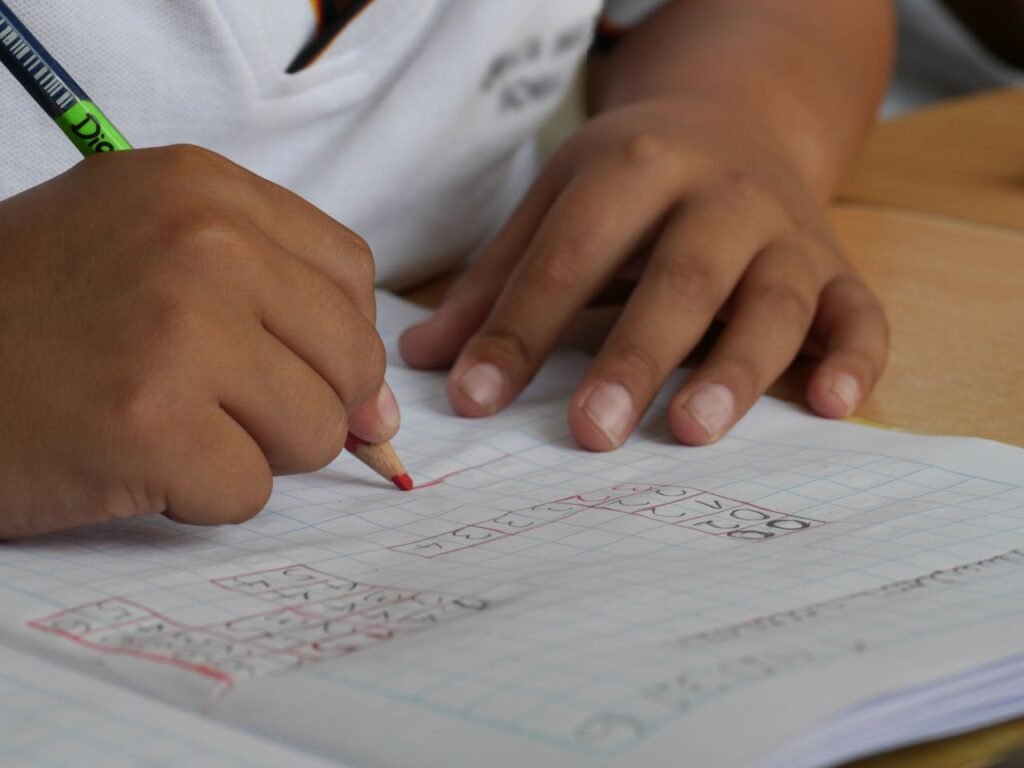Math is a skill every child needs, but not every child enjoys. For some, solving problems feels like playing a game. For others, it feels like climbing a steep hill. That’s why parents and teachers are always searching for ways to make math easier, faster, and more enjoyable.
One approach that’s been gaining attention is Vedic Math—a system of calculation techniques said to make math quicker and simpler. It’s based on ancient Indian methods that focus on mental calculations and clever shortcuts. Many parents wonder: can this be better than the “regular” math children learn in school?
In this article, we’ll explore what Vedic Math is, how it compares to the standard math curriculum, and whether it could be the right choice for your child. We’ll look at the benefits, possible downsides, and how the two can work together for stronger math skills.
What Is Vedic Math and How It Works
Vedic Math is more than just a set of “math tricks.” It’s a way of thinking about numbers that comes from ancient Indian texts, believed to be thousands of years old. In those texts, mathematics was written in the form of short, rhythmic sentences called Sutras. Each sutra is like a little rule or pattern that can be used to solve a whole group of problems quickly.
What makes Vedic Math special is how it encourages a child to look at numbers differently—not as stiff symbols on a page, but as flexible, playful objects that can be moved around in clever ways. Instead of following a long list of written steps, students learn mental shortcuts that help them reach answers faster.
A Simple Example of Vedic Math in Action
Imagine a child is asked to multiply 98 × 97.
In regular school math, they would write:
98
× 97
------
686
882
------
9506
That’s several steps and quite a bit of writing.
But in Vedic Math, there’s a much faster way:
- Think about the nearest “base” – A base is a number close to what you’re multiplying that’s easy to work with (like 10, 100, 1000). Here, the nearest base is 100.
- See how far each number is from 100 –
- 98 is 2 less than 100 (we call that –2)
- 97 is 3 less than 100 (–3)
- Subtract crosswise – Take one number and subtract the other’s difference: 98 – 3 = 95. This gives you the first part of your answer.
- Multiply the differences – (–2) × (–3) = +6. This is the second part of your answer.
- Put them together – The answer is 9506.
What took multiple lines in regular math is done in seconds in your head.
The Three Big Ideas Behind Vedic Math
Mental Calculation Comes First
Vedic Math trains the brain to hold and process numbers without having to write everything down. This keeps the mind sharp and makes math feel less like a chore.
Many Paths, One Destination
In school math, there’s usually one “approved” way to get the answer. In Vedic Math, there are often several valid shortcuts. If one doesn’t click with a child, another might.
Numbers Become Friendly
Children start to see patterns and relationships between numbers—like how 98 and 100 are connected, or how multiplying two small differences from 100 can give the last digits of an answer.
Why Many Kids Love It
For children, Vedic Math feels like discovering a bag of secret tricks. They can surprise themselves (and their parents!) by solving problems so quickly it almost feels like magic. This boost of confidence can be huge—especially for kids who’ve struggled with slow, step-by-step methods.
It’s not just speed, though. Kids who practice Vedic Math often report that math feels less intimidating and more like a fun game they’re getting better at every day.
How Regular Math Works and What It Focuses On

When people say “regular math,” they mean the standard school pathway. It moves in careful steps: first counting and place value, then the four operations, then fractions and decimals, then algebra and geometry, and later the harder stuff. The aim is steady growth across many years. Every topic is taught in a set order so children build one layer on top of another.
In most classes the flow is simple: the teacher shows a method, students watch a few worked examples, then try similar questions. Homework and quizzes check if the method “stuck.” This structure gives a sense of safety. Kids know what to expect. Parents know what will be tested. Schools can compare progress year to year.
A closer look at a “regular” multiplication
Take 98 × 97. In school, your child writes the numbers in columns, multiplies 7 by 98, then 9 by 98 (really 90), shifts one place to the left, and adds the partial results. It’s exact, it always works, and it builds place-value sense: tens, ones, and the idea that 97 is “90 + 7.” Yes, it’s slower than a shortcut—but it teaches careful thinking and neat layout. Those habits matter later in algebra and long proofs.
You can make this friendlier at home by asking, “Before we do the long steps, how big should the answer be?” Kids might say, “Around 100 × 100 = 10,000.” Now when they finish and get 9506, they can check: “That’s close to 10,000, so it makes sense.” This tiny prediction step boosts number sense inside the regular method.
What regular math is trying to build
Accuracy first.
School math trains careful, repeatable steps. This helps children avoid common slips, like lining up digits wrong or forgetting to carry. Accuracy is not just about marks—it’s about trust. When a child knows their process is solid, they feel calm in tests.
A wide foundation.
Regular math is not only arithmetic. It includes measurement, time, money, data, graphs, shapes, logic, and later algebraic reasoning. This broad mix prepares kids for many paths: science, design, business, coding—anything that uses patterns and quantities.
Exam readiness.
Like it or not, most systems measure progress with tests. Regular math teaches the formats and methods that markers expect. Children learn to show full working, label diagrams, and use clear steps. These “exam habits” convert thinking into marks.
Why many children do well in this system
Some kids love order. They enjoy ticking boxes and seeing pages of neat sums. For them, a clear recipe reduces stress. Regular math also gives frequent practice, which builds fluency. A child who repeats a method across many examples often becomes quick and confident. The variety across the year—fractions this month, shapes next—keeps skills balanced. If a child struggles with one area, another area may lift their confidence while they catch up.
You can support this at home with tiny routines: five-minute “warm-ups” before homework, quick mental-math chats in the car, or asking your child to teach you one problem. Teaching back is powerful; it locks in steps and language.
Where regular math can feel narrow—and how to soften that
For curious kids who spot patterns fast, a single “approved” method may feel tight. They might ask, “Can I do it this way instead?” and hear, “Not for the test.” That can dull their spark. Also, heavy workbook practice can make math feel like chores instead of ideas.
You can keep the best parts of regular math while adding air and light:
- Invite estimates first. “Roughly how big should the answer be?” This makes any method feel thoughtful, not robotic.
- Allow a second path. After the standard method, ask, “Can we find a shorter way?” This honors creativity without losing exam-form steps.
- Mix in “why.” When multiplying by 10, ask why a zero appears. When finding common denominators, ask why it works. A short “why” turns rules into understanding.
- Add a puzzle. Slip in one open question after the routine problems: “How many methods can reach the same answer?” Now the worksheet becomes a playground.
Regular math gives the map. With a little freedom, it also becomes a journey children enjoy.
Comparing Vedic Math and Regular Math

Vedic Math and regular math are often talked about as though you must choose one. But really, they’re more like two different tools in a toolbox. One is fast and flexible. The other is thorough and structured. Both have their strong points, and both have limitations.
Let’s look at them closely so you can see where each one shines and where it might fall short.
Strengths of Vedic Math
1. Speed in Calculation
Vedic Math gives children mental “shortcuts” for all kinds of calculations. This can mean turning a problem that would take a full minute in regular math into something solved in five seconds.
For example, multiplying 62 × 68 using the nearest base (here, 70) can be done in a few mental steps, no paper needed. That’s thrilling for a child—it feels like having a secret power. And in situations where speed matters, like mental math competitions or time-limited tests, this ability can make a real difference.
2. Boosts Number Sense
Vedic Math constantly asks students to think about the relationships between numbers. Instead of just following steps, they ask: “How is this number close to a base like 10, 100, or 1000? What patterns do I see?”
Take 98 × 97 from earlier—Vedic methods make the student instantly see “98 is 2 less than 100, 97 is 3 less than 100.” Over time, these little observations build strong number sense, helping children estimate better, check their work faster, and spot errors before they make them.
3. Builds Math Confidence
For children who have been told they are “slow” in math, seeing themselves solve big problems quickly can be transformative. A child who once avoided raising their hand might start volunteering answers just to show they can do it mentally.
This confidence boost is important—because children who feel smart in math are far more likely to stay engaged and willing to tackle harder challenges later.
Weaknesses of Vedic Math
1. Narrower Scope
While Vedic Math is fantastic for arithmetic—addition, subtraction, multiplication, division, and working with fractions—it doesn’t give the same deep coverage to topics like geometry, advanced algebra, or data handling.
This means a child who learns only Vedic Math might be very quick with sums but struggle when faced with problems that require logical proofs, diagrams, or multi-step reasoning outside of arithmetic.
2. Risk of Over-Reliance on Shortcuts
The speed and simplicity of Vedic methods are exciting, but if a child only ever uses them, they might miss out on understanding why the method works. For example, multiplying 98 × 97 with a shortcut is great—but if you don’t know why that shortcut works, you might not recognize when it doesn’t apply.
Without a strong foundation in the standard methods, shortcuts can become crutches instead of tools.
3. Not Always Accepted in Exams
Many schools require students to show their full working in the “official” method. If a child only writes down shortcut steps, they might lose marks even if their answer is correct. This is especially important for board exams, where presentation and process are graded alongside accuracy.
Strengths of Regular Math
1. Comprehensive Coverage
Regular math ensures children cover a wide range of topics—not just arithmetic, but also measurement, statistics, algebra, and geometry. This broad base is essential if a child wants to pursue science, engineering, finance, or even creative fields like architecture later on.
In short, it prepares them for the whole world of math, not just the “fast mental” part of it.
2. Teaches Logical Process
The step-by-step nature of regular math builds disciplined thinking. It teaches children to break big problems into smaller, manageable steps. This logical process mirrors how many real-world problems are solved—whether that’s coding an app, planning a budget, or designing a bridge.
These skills are transferable far beyond math.
3. Matches School Requirements
Because it follows the curriculum, regular math directly prepares students for the methods, terminology, and formats used in school exams. Students who are trained in regular math know exactly how to present their answers in a way that earns full marks.
Weaknesses of Regular Math
1. Can Be Slow and Repetitive
For children who see patterns quickly, doing every step the “long way” can feel tedious. If the pace is too slow, these students can lose interest, even if they’re capable of much more.
2. Often Only One “Correct” Method
In some classrooms, alternate methods are discouraged, which can stifle creativity. A child who has discovered a faster route might still be told to stick to the standard one “for the exam.” Over time, this can make math feel rigid instead of playful.
3. May Not Build Mental Speed
Because regular math leans heavily on written work, students may never get much practice with mental calculations. This means they might take longer on everyday tasks like quickly splitting a bill or estimating totals while shopping.
The Key Truth
Vedic Math builds speed, flexibility, and confidence with numbers. Regular math builds depth, breadth, and exam readiness.
The most powerful approach is not choosing one over the other, but using both together—so your child grows into a mathematician who is both quick and thorough.
How Vedic Math Can Complement Regular Math in Everyday Learning

You don’t have to choose between Vedic Math and regular math. In fact, when they are combined thoughtfully, the result is powerful. Vedic Math can make certain tasks quicker and more exciting, while regular math can make understanding deeper and more complete.
Here’s how they can fit together in a child’s learning routine.
1. Use Vedic Math for Mental Warm-Ups
Just like athletes warm up their muscles before a game, students can warm up their “math brain” before a lesson or homework session.
Example:
Before starting regular math homework, you could spend 5 minutes doing Vedic-style quick calculations—like multiplying numbers near 100, finding squares, or dividing by 9 mentally.
Benefit:
- Sharpens mental agility before tackling more complex written work.
- Boosts confidence, so the child enters regular math practice already feeling capable.
2. Switch to Regular Math for New Topics
When a new topic is introduced in school—like fractions, percentages, or algebra—start with the regular math approach. This ensures the child learns the standard method, understands the concepts behind it, and can present their work correctly in exams.
Example:
If the topic is fractions, follow the teacher’s explanation for adding fractions with different denominators. Practice the long-form method first so the logic is clear.
Benefit:
- Builds a solid foundation so the child understands why a method works before trying to make it faster.
3. Use Vedic Math to Reinforce Mastery
Once the child is comfortable with a topic in regular math, introduce the Vedic shortcut for it. This turns a skill they’ve already learned into something they can do faster and with more confidence.
Example:
After mastering the standard multiplication method, show the “vertically and crosswise” Vedic trick for multiplying two-digit numbers. Practice both methods so they know when and how to use each one.
Benefit:
- Makes practice feel fresh and less repetitive.
- Gives children multiple ways to approach a problem.
4. Combine Both for Real-Life Math
Real life often demands both accuracy and speed. Vedic Math helps with quick estimates; regular math ensures exactness when needed.
Example:
At a store, the child could use Vedic methods to estimate the total cost of items in their head, then check their answer using a more detailed written method later at home.
Benefit:
- Shows how math is useful outside of school.
- Teaches flexibility—knowing when speed is enough and when precision is essential.
5. Let the Child Choose the Method in Practice Time
When it’s homework or revision time, give your child the freedom to pick which method they want to try first—Vedic or regular. Then, have them do the other method as a check.
Example:
They solve 48 × 52 using a Vedic shortcut, then confirm the answer using the standard multiplication layout.
Benefit:
- Builds independence in thinking.
- Strengthens both speed and accuracy.
- Encourages self-checking habits, which reduce careless mistakes.
The End Result of Blending Both
When children can move between Vedic and regular methods, they get the best of both worlds:
- Speed and confidence from Vedic Math.
- Depth and reliability from regular math.
This balance means they can handle school exams with ease and enjoy mental math challenges without stress.
How Debsie Helps Students Learn Both Vedic and Regular Math Together

At Debsie, we know every child learns differently. Some kids thrive on structure; others light up when they find faster, creative ways to solve problems. That’s why we don’t treat Vedic Math and regular math as separate “either-or” subjects. Instead, we weave them together so children get the strengths of both.
Here’s how we do it step-by-step.
1. We Start with Understanding, Not Just Tricks
Before introducing a Vedic shortcut, our teachers make sure the child fully understands the standard method taught in school. This way, the shortcut becomes a bonus skill, not a replacement for understanding.
Example:
If we’re teaching multiplication of numbers near 100, we first go through the regular method carefully—explaining place value, the steps of multiplication, and why the method works. Only after the child is confident do we introduce the Vedic “base method” shortcut.
Benefit:
- Ensures children don’t skip the “why” behind the math.
- Makes shortcuts safer to use because the student knows when they apply and when they don’t.
2. We Use Vedic Math as a Confidence Booster
For children who feel slow or hesitant in math, Vedic methods can be a huge confidence lifter. Our teachers often start a session with a fun Vedic challenge to show students how quickly they can solve a problem.
Example:
A shy child solves 87 × 93 mentally in under 10 seconds using a base method. The teacher celebrates the achievement, and the student suddenly feels capable—even before the main lesson starts.
Benefit:
- Builds positive emotions around math.
- Makes the child more willing to try harder problems later in the session.
3. We Blend Practice in Every Lesson
Instead of keeping Vedic and regular math separate, we integrate them into the same practice set. A worksheet or activity might ask the student to solve half the problems using the school method and half using a Vedic method.
Example:
In a multiplication practice sheet, the first 5 problems are solved using the regular column method, and the next 5 are done with Vedic shortcuts.
Benefit:
- Strengthens both speed and accuracy.
- Helps students choose the best method for each situation.
4. We Apply Both to Real-World Scenarios
Our lessons often use real-life examples—shopping totals, time calculations, travel distances—where students can try both approaches.
Example:
During a “math in the market” activity, the child uses a Vedic method to quickly estimate the bill and then uses regular math to double-check the exact total.
Benefit:
- Shows students that both methods are practical.
- Connects math skills to everyday life, which keeps motivation high.
5. We Personalize the Mix for Each Child
Every student’s learning style is different. Some need more focus on speed, others need more focus on step-by-step reasoning. Our teachers adjust the balance of Vedic and regular math according to the child’s strengths and weaknesses.
Example:
A fast but careless child might get more regular math for accuracy, while a slow but careful child might get more Vedic Math for speed.
Benefit:
- Creates a tailor-made learning path.
- Ensures every child grows in the areas they need most.
6. We Keep It Fun and Gamified
Debsie’s online platform uses games, challenges, and competitions to make practice exciting. Whether it’s a timed Vedic Math challenge or a puzzle that requires the regular method, children stay engaged.
Example:
We might run a “speed challenge” where students race to solve Vedic problems in under a minute, followed by a “logic puzzle” that requires slower, deeper reasoning with regular math.
Benefit:
- Prevents boredom.
- Makes switching between the two methods feel natural and enjoyable.
The Long-Term Benefits of Learning Both Systems Together

When children grow up with both Vedic Math and regular math in their toolkit, they aren’t just better at solving sums—they develop habits, skills, and attitudes that can help them in every part of life. This is because each system strengthens different parts of the brain and different ways of thinking. Over time, these strengths work together.
Here’s what this combination can give your child in the long run.
1. A Mind That Is Both Fast and Careful
Vedic Math develops quick mental calculation skills, while regular math builds accuracy through detailed step-by-step work. Together, they train children to think fast and double-check their answers.
Example:
A student can estimate 49 × 51 in seconds using a Vedic shortcut, then verify the exact answer using the standard multiplication method. This means they rarely get stuck and are less likely to make careless mistakes.
Benefit:
- Confidence in both speed-based and accuracy-based situations.
- Useful in exams, competitions, and real-world problem-solving.
2. Stronger Problem-Solving Skills
Regular math teaches how to break a big problem into smaller steps. Vedic Math trains the mind to spot patterns and make leaps when possible. A child who learns both becomes flexible—able to switch between detailed thinking and quick-thinking depending on the situation.
Example:
In a multi-step word problem, the child might use Vedic techniques for the quick calculations inside the problem but still follow the logical sequence of the regular method to solve it completely.
Benefit:
- Ability to handle both structured and unstructured problems.
- More adaptable thinking for future studies and careers.
3. Better Memory and Mental Focus
Vedic Math relies heavily on mental processing, which strengthens short-term memory and concentration. Regular math builds long-term memory of methods, formulas, and concepts. Together, they create a strong mental foundation.
Example:
When revising for an exam, the child can recall standard formulas from regular math while also remembering mental shortcuts from Vedic Math—making them more efficient in both preparation and performance.
Benefit:
- Sharper recall under pressure.
- Stronger attention span during lessons and study time.
4. Higher Confidence in Any Math Setting
Many children lose confidence when a question looks unfamiliar. But when a child has two sets of strategies—one from Vedic Math, one from regular math—they know they can try more than one way to reach the answer. This safety net reduces anxiety.
Example:
If they forget the regular method for a division problem in an exam, they can use a Vedic approach to work it out mentally.
Benefit:
- Less fear of “getting stuck.”
- More willingness to attempt challenging problems.
5. Lifelong Appreciation for Math
When math is only slow, step-by-step work, some children see it as a chore. When it’s only fast shortcuts, they may miss the beauty of deeper reasoning. The blend of both shows them math is both a game and a science—a place where speed and depth can exist together.
Benefit:
- More likely to stay interested in math in higher education.
- More prepared to use math in daily life without stress.
Conclusion — Should You Choose Vedic Math, Regular Math, or Both?
Vedic Math and regular math are not rivals. They are partners. Regular math gives children the full, deep understanding they need to succeed in school and master a wide range of topics. Vedic Math gives them the mental agility, speed, and pattern-recognition skills that make math exciting and less intimidating.
When used together, they create a child who can think quickly and carefully, who can solve problems in multiple ways, and who feels confident no matter what kind of math question appears.
At Debsie, we believe no child should be limited to one way of thinking. That’s why we integrate both systems in our lessons. Our expert teachers ensure students learn the “why” and the “how” behind every concept while also giving them the mental shortcuts that make math faster and more enjoyable.
👉 Book a free trial class today at https://debsie.com/courses/ and see how our blended approach can transform your child’s math journey.
Because when a child learns to think like a mathematician—and enjoys it—their potential is limitless.
Read next:



